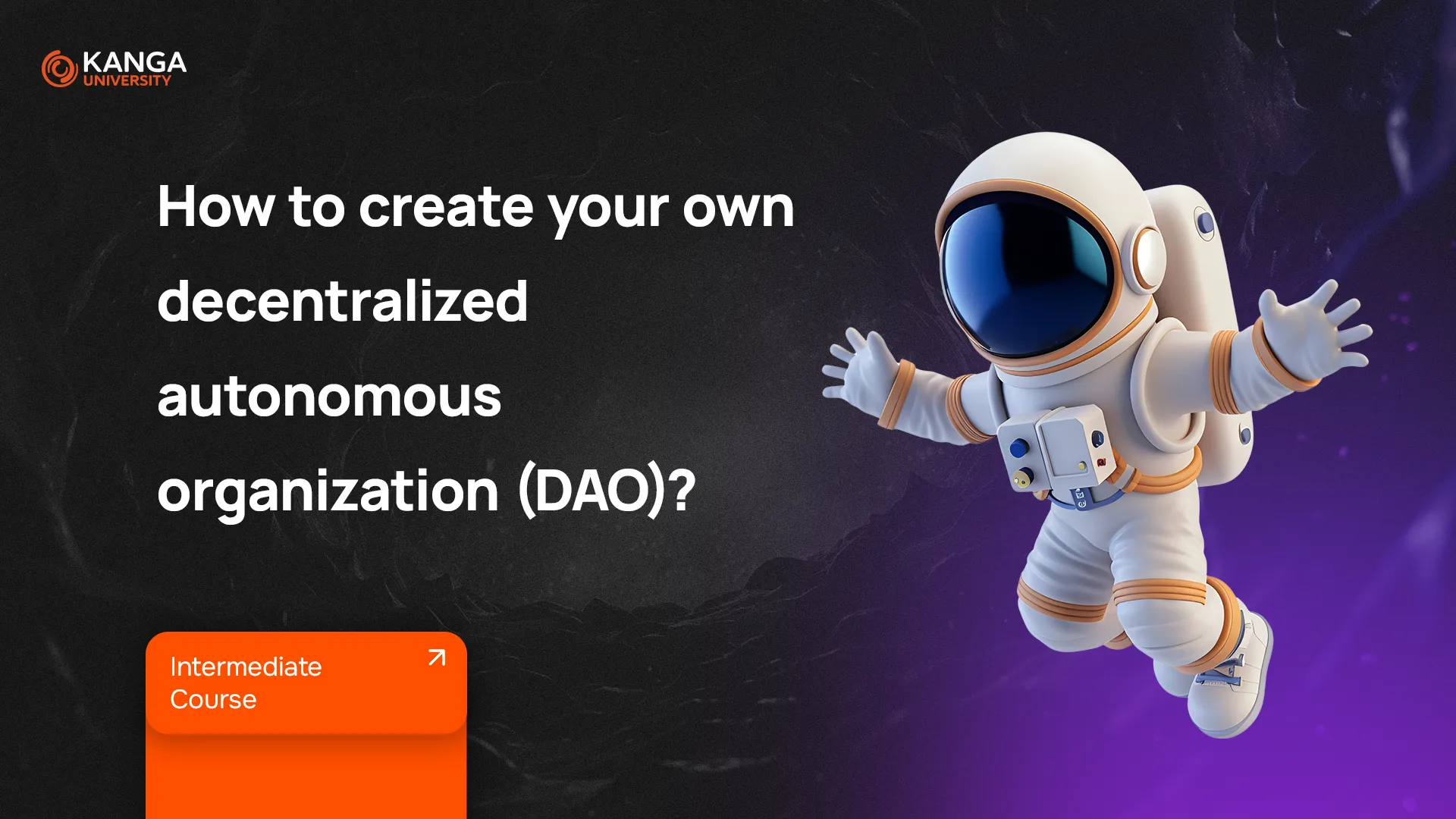
Decentralized Autonomous Organizations, or DAOs, are one of the most exciting innovations in the Web3 space. Some say launching a DAO takes just a few clicks. Others — and we agree — believe it takes careful planning and real strategy.
In this lesson, you’ll learn what a DAO actually is, and how to build one from the ground up.
What Is a DAO?
A DAO (Decentralized Autonomous Organization) is a new type of organization that doesn’t need a CEO, a boardroom, or even an office. Instead of people making decisions from the top down, DAOs run on smart contracts — bits of code that execute actions automatically, based on rules written into the blockchain.
In a DAO, there’s no central authority. Power is distributed among token holders, who can propose and vote on changes. Think of it like a digital co-op, where the community makes the rules — and enforces them.
Most DAOs also have a treasury, a pool of funds used to support the community’s decisions and development — similar to how companies reinvest their profits.
What You Should Know Before Creating a DAO
Before you dive in, there are a few key things to understand:
-
DAOs are not traditional companies. There’s no paperwork, no HR department, and no formal hierarchy. You won’t know who your collaborators are — just their crypto wallet addresses.
-
DAOs are not always legally recognized. In many countries, DAOs don’t have legal status, which means legal disputes can be hard to resolve.
-
DAO members are often anonymous. There’s no KYC (Know Your Customer) verification, and no one’s asking for your ID.
Step 1: Define the Purpose of Your DAO
Before anything else, ask yourself:
-
What is the goal of this DAO?
-
What problems will it solve?
-
Who is your target community?
-
What kinds of decisions will be made?
-
What tech resources do you need?
Having a clear vision is critical — it’ll guide everything else you build.
Step 2: Choose Your DAO Type
Not all DAOs are created equal. Here are a few common types:
-
Protocol DAOs – Manage DeFi protocols like MakerDAO or Uniswap.
-
Investment DAOs – Pool funds to back early-stage Web3 projects.
-
Grant DAOs – Support open-source and DeFi initiatives.
-
Community DAOs – Focus on growing online communities, like Friends With Benefits.
-
Collector DAOs – Buy and manage NFTs as a group (e.g., PleasrDAO).
-
Entertainment DAOs – Build games or virtual worlds.
-
Philanthropic DAOs – Fund impact-driven Web3 projects (e.g., BigGreen DAO).
Step 3: Design Your Token
Your DAO’s token is the foundation of its governance and incentives. You’ll need to decide:
-
Total supply
-
How tokens will be distributed (founders, community, contributors)
-
Voting power
-
Utility (rewards, access, governance)
Tokens help you raise funds, reward engagement, and let your community vote on decisions.
Step 4: Build the DAO
Now it’s time to bring your idea to life. Luckily, there are tools to help — you don’t have to code from scratch.
Popular DAO-building platforms:
Once your DAO is live, you’ll need a treasury to manage your community’s funds securely.
Treasury tools:
Step 5: Grow Your Community
No DAO can function without people. The strength of your project depends on an active, engaged community.
You’ll need to:
-
Create strong communication channels (Discord, Twitter, newsletters)
-
Encourage participation in proposals and votes
-
Offer rewards or recognition to active contributors
-
Keep the community aligned with your vision
The more involved your members are, the more resilient your DAO will be.
Summary
Starting a DAO may seem complex, but with the right tools and mindset, it’s completely doable. If you have a strong idea, a committed community, and a clear roadmap, you can build something powerful — even without being a coder.
DAOs are changing how people organize, build, and govern — and they’re opening the door to a more decentralized and democratic Web3 world.